Zoom is one of the most popular video conferencing applications. Many companies rely on this app to host meetings, and physically distant families and friends use the platform to have a wonderful time together. But, what do you do if the others cannot hear you in a Zoom meeting?
Various issues prevent your microphone from working on Zoom, thereby affecting your experience. And in most cases, you need to figure out the problem real quick and fix it.
The primary way to troubleshoot microphone issues on Zoom, or any other app for that matter, is to identify the issue. Therefore, we will first walk you through the various issues and then their respective fixes.
Why is the Zoom Microphone Not Working?
Here are a couple of reasons why your Zoom microphone may not be working:
- Your microphone is on mute
- Another microphone selected
- Microphone is disabled
- Outdated microphone drivers
- Microphone not plugged in properly
- Zoom does not have access to the microphone
- The host put you on mute
And the list goes on…
These are some general issues that you may encounter. If you can identify the problem, head right to the relevant fix, or execute them in the mentioned sequence for quick troubleshooting.
1. Join the Meeting with Audio
You get to choose to join a Zoom meeting with or without audio at the very start of the meeting. In case you choose without audio or skipped the step without making a selection, you can always turn on your audio while in a meeting.
To join the meeting with audio, click on the ‘Join Audio’ option at the bottom-left corner of the screen.

2. Check if You Are on Mute
The first thing you should check out for is the mute button. Zoom mutes you by default when you join a meeting, and you will have to unmute to speak.
Look to the bottom left of the Zoom meeting page to check if you are on mute and to unmute yourself. If you see ‘Unmute’ click on it to unmute yourself. But if it says ‘Mute’, and you are already on unmute, then the Zoom audio issue lies elsewhere.
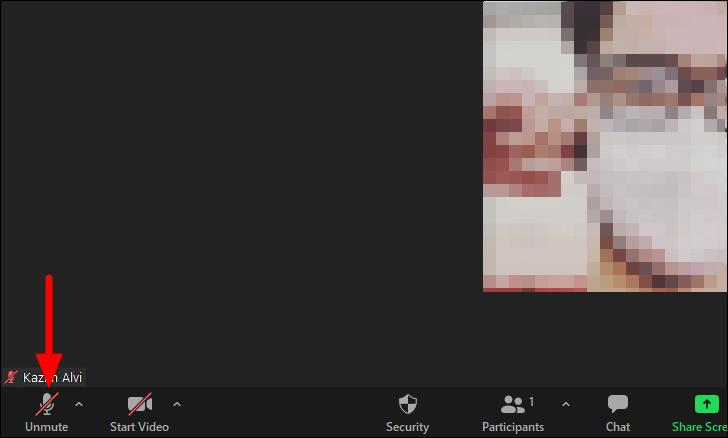
3. Verify Microphone Selection
There could be a wrong microphone selection issue if your active mic is unmuted. This can happen when you have multiple microphones connecting to the system. In this case, you will have to verify the microphone selection and choose the correct mic. To do this, click the upward-arrow icon next to the ‘Mute’ option at the bottom-left of the screen.
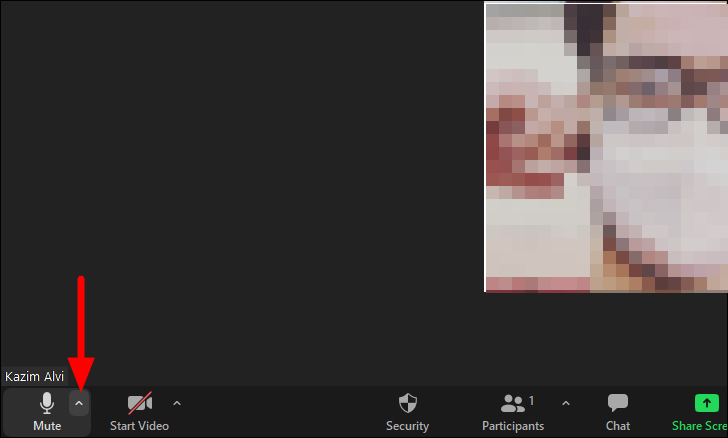
Now, select the desired microphone from the ones listed under ‘Select a Microphone’.

Head onto the next fix if this doesn’t help the issue.
4. Check Microphone Connections
You may encounter mic problems if the microphone is not properly connected. This shouldn’t be the case with an internal or built-in mic. But if you are using an external microphone, ensure that it’s connected properly.
If it’s a wired microphone, make sure it’s appropriately plugged in. In the case of USB connections, try plugging it into a different port. Sometimes it could be the port that’s causing the issue and simply switching ports would fix the issue.
In the case of Bluetooth microphones, Forget and Reconnect the microphone or switch it off for a while and then turn it on. Also, enabling and disabling ‘Flight Mode’ works as an effective fix for many, but you might not be able to execute it while in a meeting since it will affect your Wi-Fi connection. You can easily troubleshoot issues with Bluetooth devices by executing a bunch of fixes to get things up and running.
5. Check Microphone Volume
If your voice is too low, it could be due to the microphone volume settings. In this case, you can head over to the microphone volume settings and adjust it. You can adjust the microphone volume both in the Zoom settings and system settings. We recommend checking both
To check the microphone volume in Zoom, click on the upward-facing arrow near the mute option and select ‘Audio Settings’ from the menu that appears.
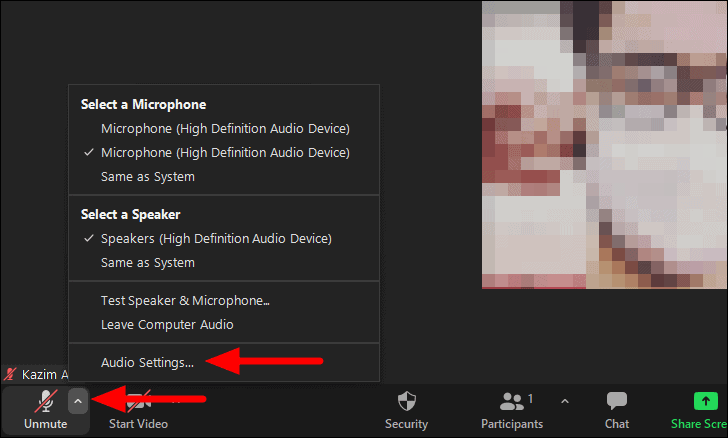
Next, untick the ‘Automatically adjust microphone volume’ option and then drag the slider under ‘Input Level’ to the right to increase the microphone volume.

Once you have adjusted the microphone volume to the optimum level, check if that fixes the issue. If the issue persists, check the microphone volume level in the System Settings as well.
To check the microphone volume in system Settings, right-click on the ‘Start’ icon in the Taskbar or press WINDOWS + X to launch the Quick Access menu, and select ‘Settings’ from the list of options. Alternatively, you can press WINDOWS + I to directly launch the Settings app.
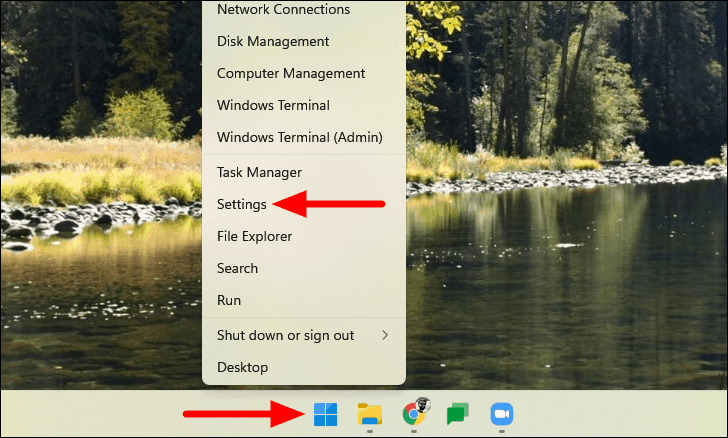
In the ‘System’ tab of the Settings app, click on the ‘Sound’ option on the right.
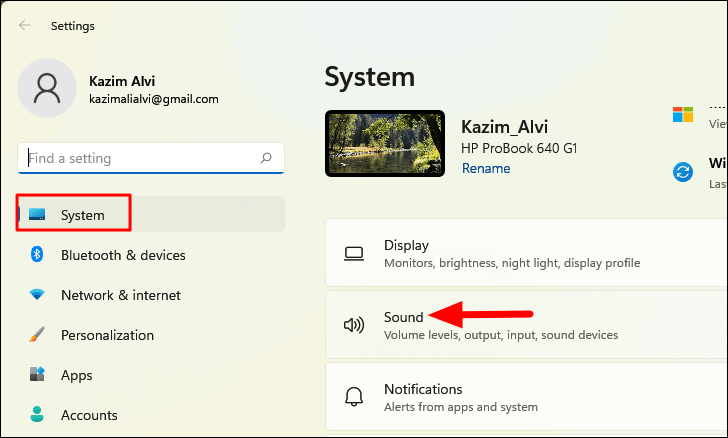
Next, head to the ‘Input’ section and drag the volume slider to the right, and adjust the volume to an optimal level so that your voice is audible in a Zoom meeting.
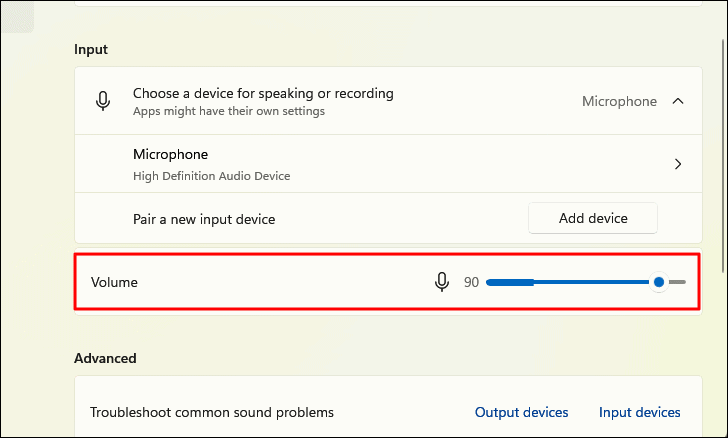
Check if adjusting the microphone volume fixes the issue. If not, move to the next fix.
6. Ensure Zoom Has Microphone Access
Many times users continue to make changes in the settings, while Zoom does not have access to the Microphone – which should not be the case. If it is, here’s how you can fix it.
To check Zoom’s access to the Microphone, launch the Settings app as discussed earlier, and select ‘Privacy & security’ from the tabs listed on the left.

Next, select ‘Microphone’ under ‘App permissions’.
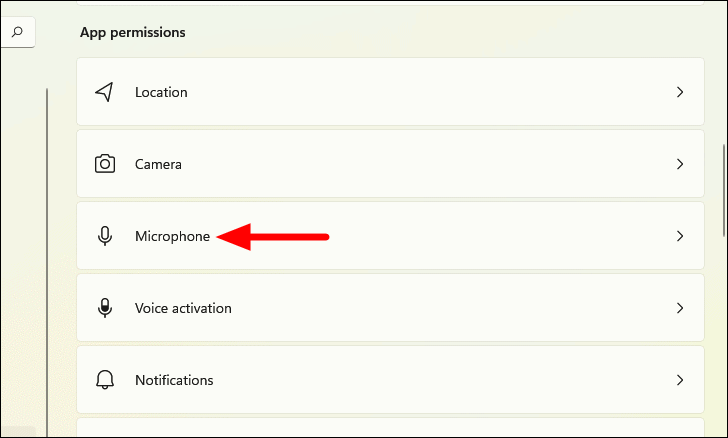
Ensure enabling the toggle next to ‘Let apps access your microphone’. If disabled, click on the toggle to push it to ‘ON’.
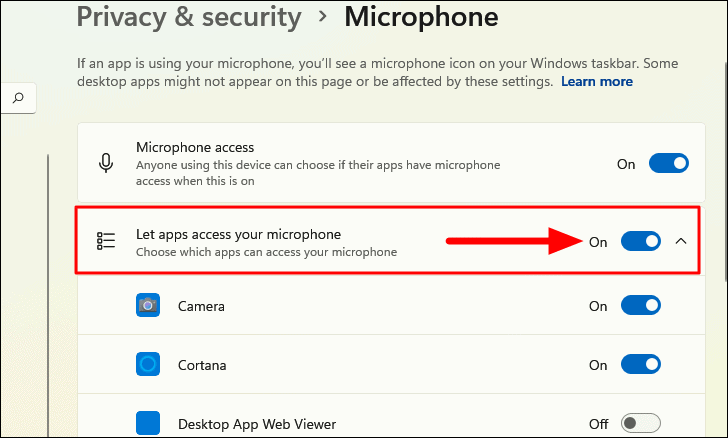
Scroll down to find the ‘Let desktop apps access your microphone’ section. If Zoom is on this list, ensure enabling the section by clicking the toggle to push it to ‘ON’.
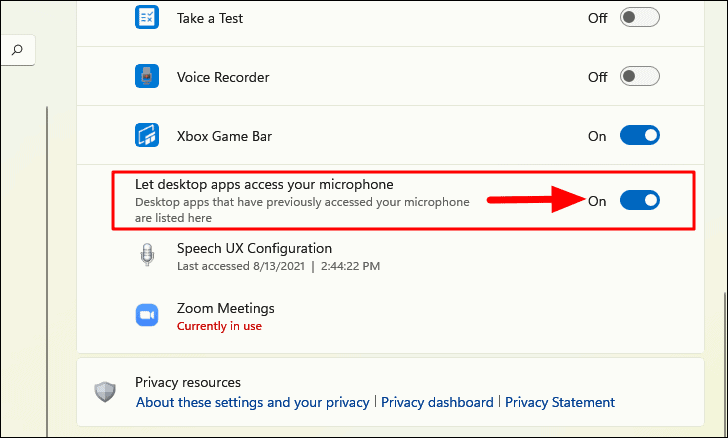
This should fix any issue with the microphone on Zoom. If the issue persists, try the next fix.
7. Update Microphone Driver
If none of the above fixes worked, the issue is an outdated microphone driver. In which case, you have three options to update the driver. We have listed all three methods and you must try them all out to install the driver update if there is any.
To update the driver via the Device Manager, press WINDOWS + S to launch the Search menu, enter ‘Device Manager’ in the text field at the top, and click on the relevant search result.

In the Device Manager, locate and double-click on ‘Sound, video and game controllers’ to expand and view the devices under it.

Next, right-click on the microphone in use and select ‘Update driver’ from the context menu.
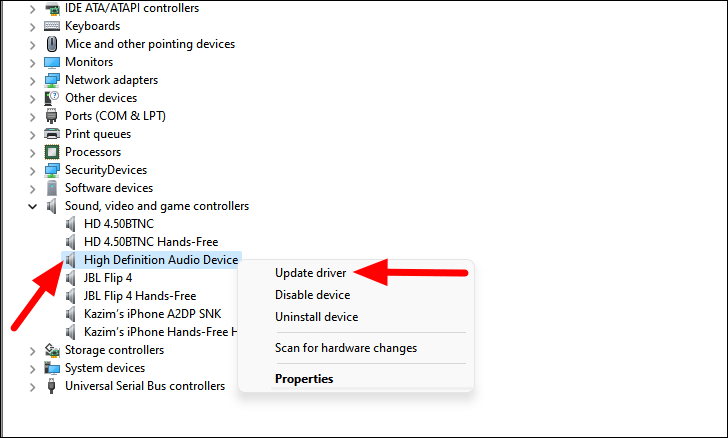
You will find two options on the ‘Update Drivers’ window. The first is to let Windows search for the best available driver on your system and install it, while the second is to manually locate and install a driver. Let Windows do the job, and select the first option – ‘Search automatically for drivers’.

If Windows couldn’t look for better drivers, the screen will read ‘The best drivers for your device are already installed’. In this case, you can head to the next method to update the microphone driver.
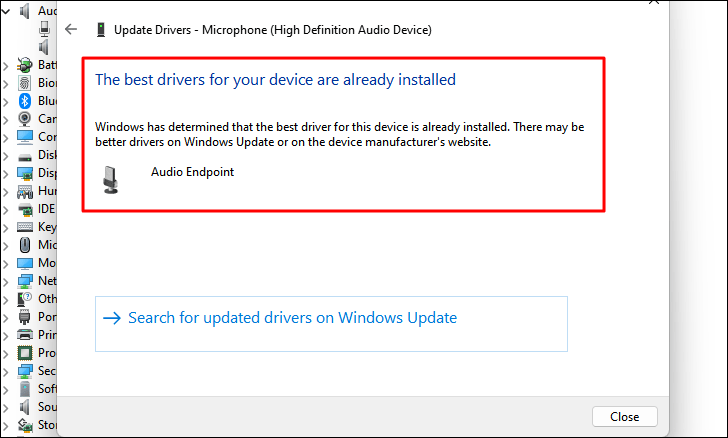
Check if installing a driver update fixed the issue. If it didn’t, you can still try the other methods.
The next method is to install driver updates via Windows updates. The ‘Optional updates’ section of Windows update lists driver updates, and you can install them from here.
To update the microphone driver via Windows Update, launch the ‘Settings’ app as discussed earlier, and select the ‘Windows Update’ tab from the left.
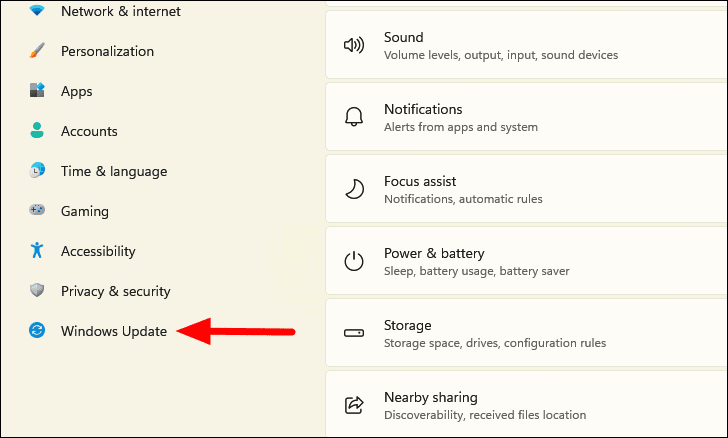
Next, click on ‘Advanced options’ on the right.
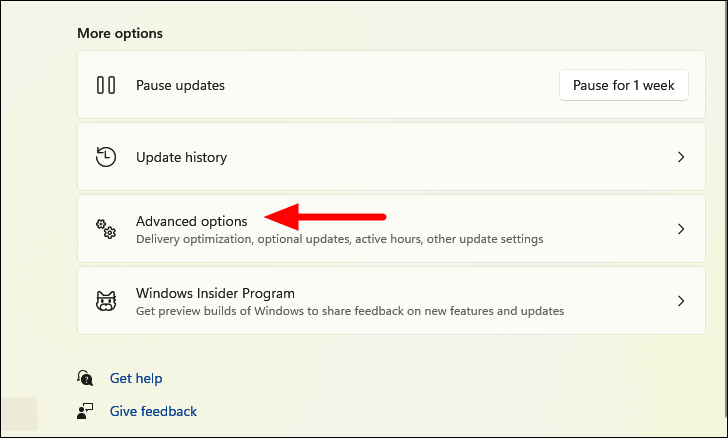
Now, select ‘Optional updates’ under ‘Additional options’.
Note: Windows mentions if there’s a driver update available next to ‘Optional updates’. If there’s none available, you can directly head to the next method and skip the remaining steps here.
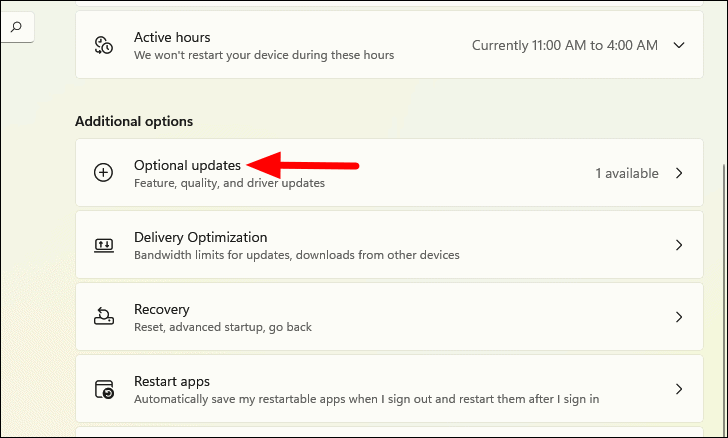
In the ‘Optional Updates’ window, click on ‘Driver updates’.

Next, select the driver update for the microphone and click on ‘Download & install’ under it to install the driver.
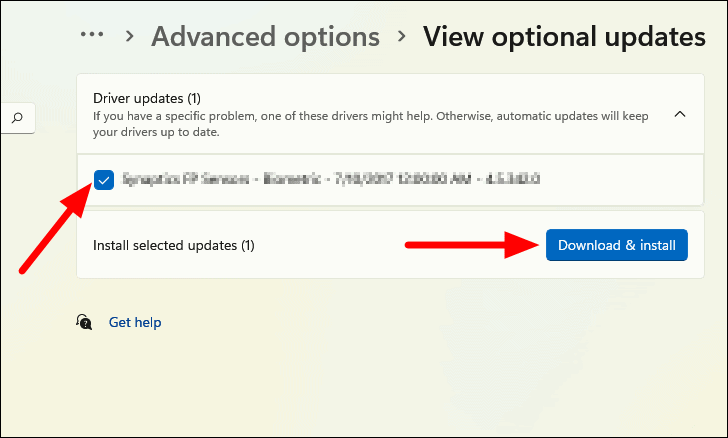
After installing the update, restart the computer, if prompted, to apply the changes. This should fix the microphone issue on Zoom.
However, if you couldn’t find a driver update in the Windows update, it doesn’t rule out the possibility of one existing altogether. Many device manufacturers do not submit driver updates to Microsoft. They upload them on their respective website(s) instead. Therefore, it’s best to check the manufacturer’s website when Windows update cannot find a driver update.
To install a driver update from the manufacturer’s website, you will first have to identify the version of the driver currently installed on your system. To do that, right-click on the concerned microphone in the Device Manager and select ‘Properties’ from the context menu.
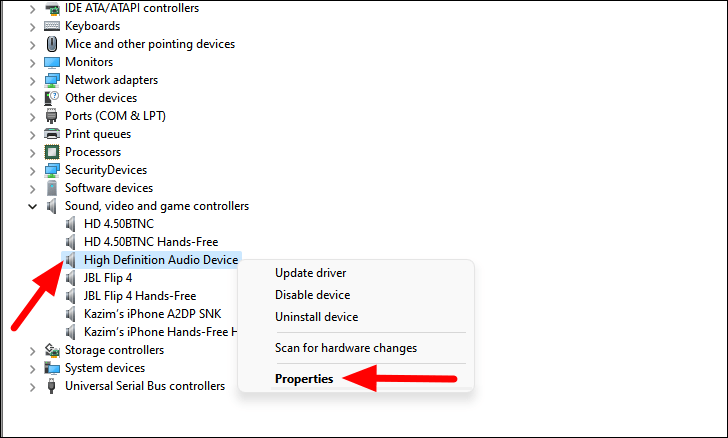
In the Properties window, navigate to the ‘Driver’ tab and jot down the driver version.
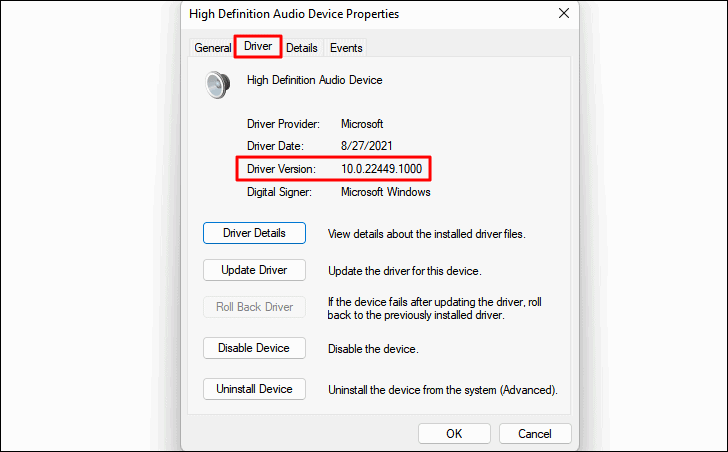
Next, open Google, and search for the driver update using ‘Device Name’, ‘OS’, followed by ‘Driver Update’. Locate the official manufacturer’s website from the search result and check if there’s a newer version available. If there’s one available, download it.
Head to the location of the downloaded file and double-click it. This should launch the installer window. Next, follow the on-screen instructions to complete the installation process.
After installing the driver update, restart the computer (if prompted) for the changes to come into effect. This will, in all likelihood, fix the Zoom microphone issue.
8. Restart the Computer
Sometimes, the Zoom microphone issue could persist due to a different program’s access to the microphone. In this case, you can either identify the program and terminate it or simply restart the computer. Restarting the computer will terminate all applications and background processes that may be interfering with Zoom.
To restart the computer, go to the desktop, press ALT + F4, select ‘Restart’ from the drop-down menu, and click on ‘OK’ at the bottom.
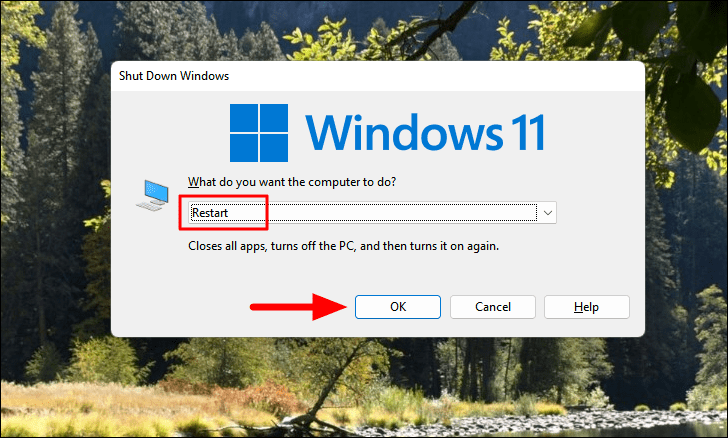
Check if the microphone issue is fixed after restarting your computer.
9. Update Zoom
A bug in the current Zoom version may also be causing the mic problem. Subsequent updates released by the application, generally fix such bigs. Hence updating Zoom would be an ideal fix.
To update Zoom, launch the app, and click on the ‘Profile’ icon at the top-right corner.

Next, click on ‘Check for updates’ from the list of options in the menu that appears.
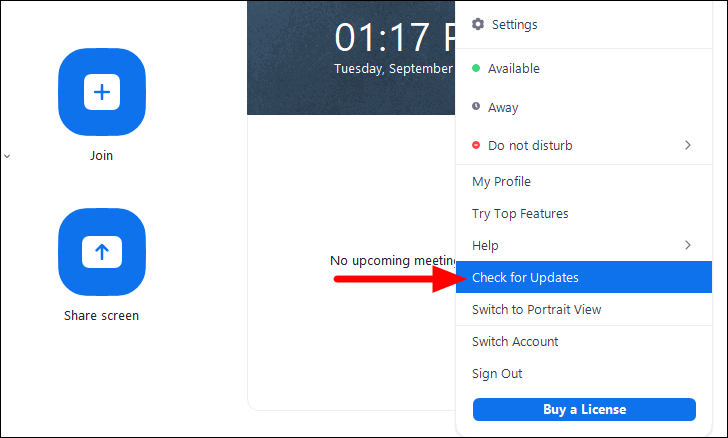
Any available updates will automatically install, and this should fix the issue.
While some of the above fixes can be executed during a Zoom meeting, others have to be executed either before or after it. Whatever may be the case, one of the methods will surely help fix the microphone issue on Zoom for you.










Member discussion